
views
Reducing the Swelling at Home
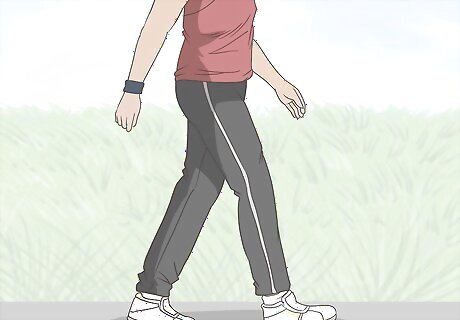
Exercise lightly so your body fluids circulate better. Most cases of edema occur when you’re sedentary for long periods of time, making fluids pool in your legs. Try getting up and taking some short walks or doing light aerobics at home to circulate fluids away from your legs. In many cases, this clears up the edema without any further problems. Swelling might occur after you’ve sat still for a long time, like during a plane ride. If you experience edema after something like this, try walking around a little to make the fluid drain away from your legs. If you’re not mobile, try just standing up and walking in place a few times throughout the day. Even this little bit of motion could help.
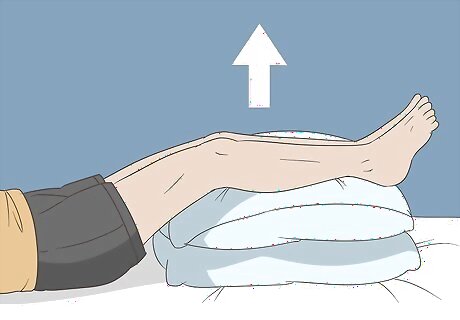
Elevate your legs above your heart as much as you can. This drains fluids away from your legs and reduces the swelling. If you’re sitting on the couch, try laying back and putting some pillows under your feet, or propping them up on an armrest. Enter this position whenever you sit down to drain away more fluids. Elevating your legs while you sleep helps a lot, too. Put some pillows under your feet or elevate the foot of your bed a little with wood blocks or thick books.
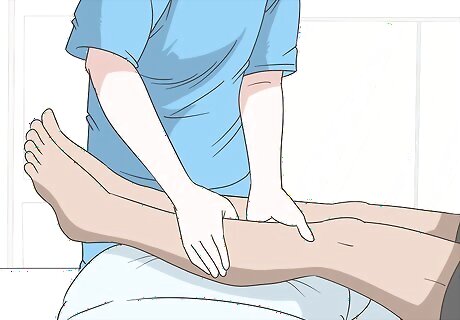
Massage your legs towards your heart to help the fluid drain. Lay back with your legs elevated to help the fluid drain. Then apply firm pressure to your legs, starting down by your ankles. Massage down your leg towards your body to push the fluid out. Do this for each leg 2-3 times per day to improve circulation. Be careful if you have blisters or abrasions on your legs. Edema could make your skin more susceptible to injuries, so use very light pressure on any injured spots. Use lighter pressure if you feel any pain when you press down. The massage should not be painful.
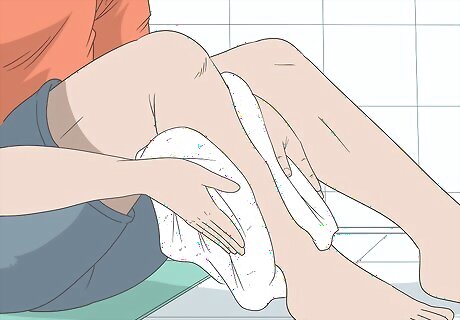
Wash and dry your legs to prevent infections. Since your skin might be more fragile with edema and circulation is poor, you’re more susceptible to injuries and infections. Keep your legs clean and dry. Wash them with warm water and gentle soap, either in the shower or with a sponge. Then pat them dry with a clean towel. Applying a gentle, fragrance-free moisturizer after washing can prevent your skin from drying out and cracking. Use a soft sponge and don’t scrub your legs hard. Your skin is weaker and could break.
Making Lifestyle Changes
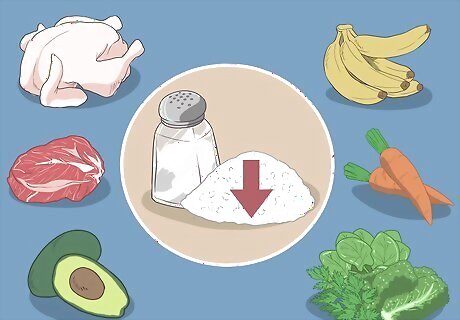
Reduce your salt intake to prevent fluid retention. If you regularly experience edema, switching to a low-salt diet can help. Check all nutrition labels and eat products that are low in salt. Eat as many fresh fruits, vegetables, and lean mats as you can to replace high-salt processed foods. Common suggestions for a low-salt diet range from 1,500 to 2,300 mg of salt daily. Speak with your doctor about the ideal range for you. Try to cut out processed foods and reduce how much you eat at restaurants. These foods are usually packed with salt. Foods that come in a can are often very high in salt as well. Replace salt with other seasonings when you cook at home. Certain types of pepper and other spices can keep your food tasting delicious while cutting down on your salt intake.
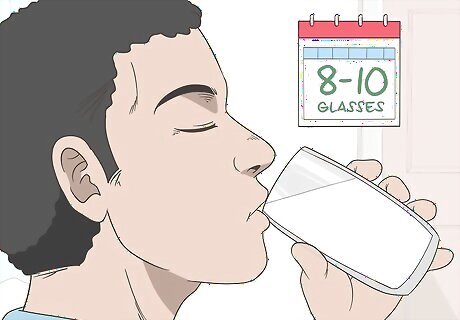
Drink 8-10 glasses of water every day to help fluid circulate. While adding more fluid to your diet might seem counterproductive, it actually helps prevent edema. Your body fluids don’t circulate well when you’re dehydrated, so make sure you get plenty of water. Drink at least 8-10 glasses daily to prevent further swelling. Drinking 8-10 glasses is just a guideline, and you probably need more if you exercise or the weather is hot. Always drink enough so you don’t feel thirsty and your urine is a light yellow color. You can also have juices or other drinks, but try to limit the number of sugary drinks you have. Plain water or seltzer is best.
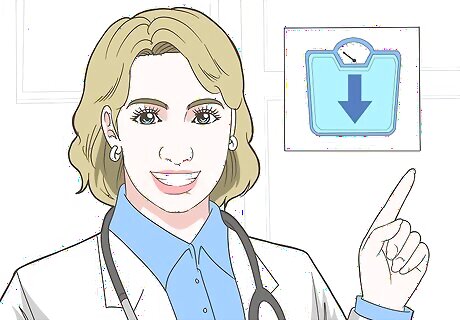
Maintain a healthy body weight if you’re overweight. Being overweight decreases your body’s circulation and could cause edema. If you’re overweight, speak with your doctor to find the ideal weight for you. Then exercise and eat right to lose weight if you have to, and maintain that new weight. Many of the steps you’ll take to lose weight will also help prevent further edema. Eating healthy, drinking enough fluids, and staying active help you lose weight and keep your body fluids circulating properly.
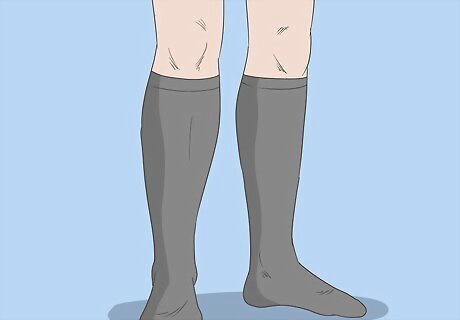
Use compression stockings to prevent fluid from pooling in your legs. Compression stockings apply light pressure to your legs, pressing out any fluids that might be pooling. Try getting a pair from a medical supply store and wearing them every day to prevent another bout of edema. You can also use compression stockings for varicose veins to help blood flow throughout your body rather than having it pool in your feet. Compression stockings are usually only used when the swelling has already subsided, so don’t use them while you currently have edema unless your doctor tells you to. If you’re prone to edema, put your compression stockings on before you know you’ll be staying still for a long time, like on a flight. Use caution if you’re wearing compression stockings and have edema from heart failure since they can increase the blood volume to your chest and cause acute heart failure.
Seeking Medical Attention
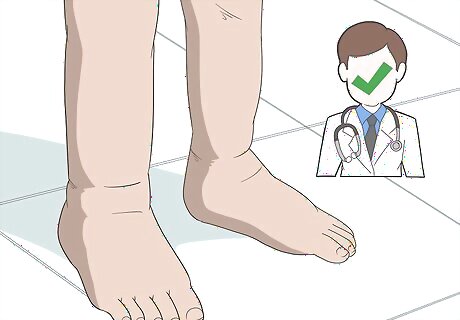
Visit your doctor if the swelling does not subside in a few days. While many cases of edema clear up on their own, some others come from an underlying medical issue and don’t go away. If you’ve tried home remedies for a few days, call your doctor and have an exam. The doctor can provide the necessary treatment to reduce the swelling, leaving you good as new afterward. If your leg swelling comes with chest pains or shortness of breath, seek emergency medical help right away. This could be a serious condition.Warning: If you have swelling on one side of your leg, seek immediate medical care to make sure you don’t have deep vein thrombosis, which is a blood clot deep inside your body.
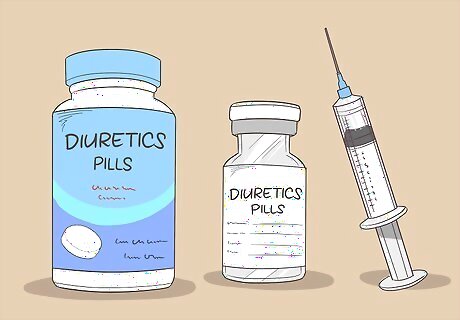
Take diuretics to flush fluids out of your body. Diuretics make you urinate more frequently and drain fluid from your body. This is the most common treatment for edema if you know the underlying cause, and probably what your doctor will prescribe. Follow your doctor’s instructions and take the medication correctly. Diuretics come in pill or IV form. The doctor may give you an initial dose with an IV and then send you home with a pill prescription. Avoid using diuretics solely for leg swelling since it can lower your blood pressure and could lead to hypotension and electrolyte changes. Your doctor may always want to try some home remedies like elevation before giving you medications. Don’t be surprised if they send you home to try these first. Keep your doctor informed on whether or not these are working.
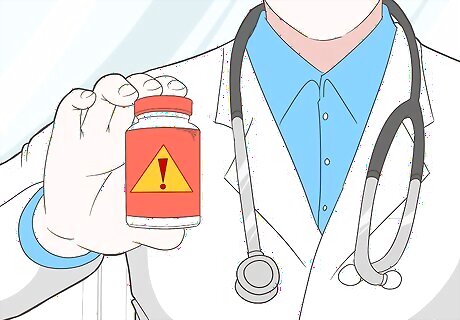
Ask your doctor if you're on any medications that could cause edema. Certain medications could also cause edema. During your appointment, they will question you about your medical history and ask about all the medications you’re taking. If any of these are associated with edema, your doctor will probably switch you to a different medication and see if that helps. Some medications that are known to cause edema are antidepressants, blood pressure drugs that are calcium channel blockers like amlodipine, hormones like testosterone and estrogen, and steroids like prednisone. Never stop taking any medication unless your doctor tells you to.
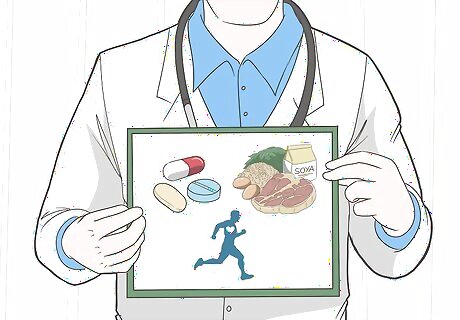
Treat underlying health issues to prevent further edema. In some cases, edema is a side effect of a different health issue. If you suffer from an underlying issue, follow all of your doctor’s instructions on treating that condition, including taking medications correctly, following a specific diet, or exercising. Conditions that commonly cause edema are kidney or liver problems, congestive heart failure, cirrhosis, and autoimmune disorders.















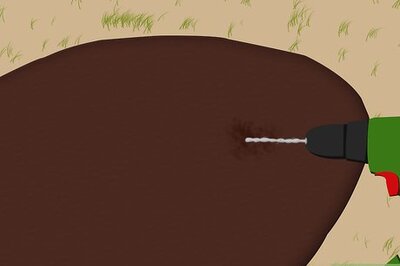



Comments
0 comment